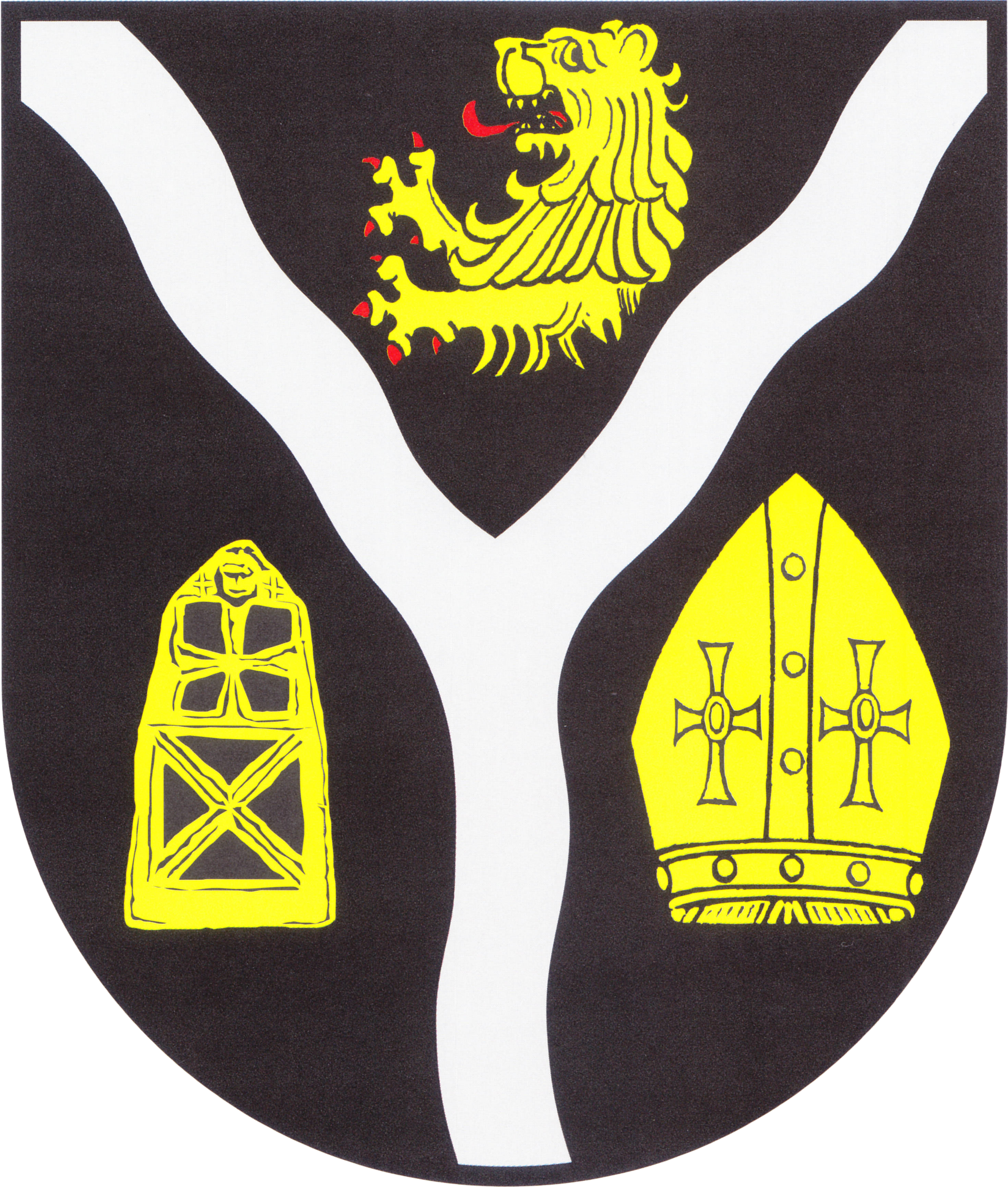The community has had the following coat of arms since 1982:
Moselkern - the gateway to the Elz
We are particularly proud of our architectural and cultural monuments...
"Tour through Moselkern" here to download
Old Town Hall
Railroad station
The Merovingian Cross
list of monuments
in the location:
• At train station 2–4: train station; one-storey reception hall, half-timbered goods shed, two-storey commercial part with apartment, Heimatstil, 1909; Entire system with tracks
• Bergweg 1: Quarry stone building, around 1900/10
• Elztalstrasse: Old Lohmühle; 19th century; late historicist quarry stone villa, late 19th century; two quarry stone mill buildings; factory building; Entire facility with garden
• Fährstraße 2: Hotel "Burg Eltz"; three-storey quarry stone building, marked 1902
• Kirchstraße 2: half-hipped roof building, marked 1767
• Kirchstraße 5: half-timbered house, partly solid, marked 1629
• Kirchstrasse, corner of Moselstrasse: garden with corner pavilions
• Moselstraße: two-arched bridge over the Elzbach, marked 1892
• Moselstraße 5: former Halfenhaus; Half-timbered building, partly solid, half-hipped roof, marked 1738
• (at) Moselstraße 10: niche figure, 19th or 20th century
• Moselstraße 13: three-storey classical half-timbered house, plastered, half-hipped roof, extension with cast iron loggia,
a 1900
• Moselstraße 15: wayside cross, 19th century
• Moselstraße 31: Late historicist quarry stone villa, partly half-timbered, Moselle style, around 1900
• Moselstrasse 33: Late historicist, multi-wing quarry stone villa, partly half-timbered, around 1900; Entire facility with garden
• Oberstraße 7: winegrower's villa; Mansard roof building, quarry stone; Structural overall system with economy
• Oberstraße 14: Quarry stone building, partly half-timbered, first half of the 16th century.
• Oberstraße 21: former Count von Eltzsches Oberrentamt; broad plaster building, marked 1709; historicist stair tower, 19th century; Entire facility with garden
• Oberstraße 22: winegrower's house, slate stone, 19th century
• (an) Oberstraße 33: skylight door, marked 1821
• (an) Oberstraße 43: lintel, marked 1722
• Oberstraße 47: former town hall; three-storey half-timbered house, partly solid, marked 1535; Back probably from the
second half of the 16th century
• Oberstrasse 57: Catholic parish church of St. Valerius; Hall construction, 1788–90, Romanesque west tower, tower portal marked 1781;
Vesperbild above the tower portal, marked 1681; Merovingian tombstone (cast); Missionary Cross, 18th century;
Assistant figures of the old high altar, 18th; grave cross, 1755; basalt cross, 1766; grave slab, 1791; Coronation of Mary, early 18th century; tomb with vase; War memorial, neo-baroque relief pylon
• Oberstraße 60: Half-timbered house, plastered, early 19th century
• Oberstraße 62: late historicist-romantic quarry stone house, marked 1897; Entire facility with garden
• Oberstraße, corner of Fährstraße: half-timbered barn, partly solid, around 1800
• Seilerstraße 1: Half-timbered house, partly solid, marked 1717
in the district:
• on the K 33 in the direction of Münstermaifeld: chapel, rubble stone, 1876/80; three Stations of the Cross, quarry stone, reliefed wayside shrine or stele types
• north of the village: holy house with a cross; Oak and basalt, marked 1689 and 1733
• north of the village: vineyard chapel, neo-Gothic central building, quarry stone, 1891





